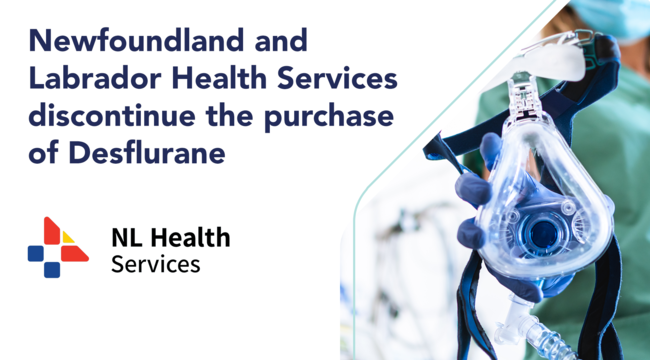HealthPRO Canada News
August 13, 2021
The path to partnership success: Enterprise Ireland taps into HealthPRO’s pharmaceutical expertise

Ireland didn’t become a tech leader by not considering the perspectives and advice of outsiders. They brought the same curious approach to a panel discussion about breaking into the Canadian pharmaceutical market.
Once an agriculture-based economy with mass emigration, Ireland has emerged in recent decades as a leader when it comes to AI (Artificial Intelligence), cybersecurity, and technological innovation. In fact, Ireland’s capital of Dublin is considered one of the most important hubs of tech innovation on the continent. So, with its natural inclination towards new development, Enterprise Ireland had no qualms about reaching out to their North American counterparts for advice on moving its pharmaceutical products to market.
“Engaging with new suppliers is essential for building diversity of supply and so we welcomed the chance to start a conversation,” said HealthPRO’s Vice President Pharmacy, Christine Donaldson. “We definitely saw this as a win/win for our members and for Ireland.”
In June, Christine was invited to participate in an event called Market Insights: Building a Resilient Supply Chain and Distribution Network in North America. She was joined on a panel by Jesse Ledger, President and CEO of Miravo Healthcare, a pharmaceutical company, and Mike Canzoneri, President and CEO of CHS (Canadian Hospital Specialties), a manufacturer and distributor of medical and surgical products.
How did COVID-19 disrupt your organization?
Before diving into the gritty details of how distributors can navigate the complexities of the North America market, host Sam Tarantino, Head at BioScript Logistics Inc., asked the panelists about managing during the pandemic.
“Never waste a crisis,” is how Christine summed up HealthPRO’s response to how we plan to further strengthen our supply chain after experiencing new levels of demand for essential drugs. “We immediately started working with our trusted supplier network to develop surge capacity strategies, even though we were all chasing the same critical drugs the entire globe was looking for.”
When Health Canada announced interim orders, this opened the door for global suppliers being able to meet the demand for COVID critical drugs. HealthPRO had been working on creating a Critical Drugs List – now they had the incentive to make it happen quickly to address the unanticipated demand, together with their 1,300-member healthcare facilities.
Along with key members of its Pharmacy Advisory Council, HealthPRO narrowed the list of high-demand medications to a short-list of critical molecules and proactively engaged with members to identify their anticipated volumes.
HealthPRO also proactively engaged our extended supplier community to establish a supply of COVID-19 critical medications beyond our contracted suppliers, issuing Standing Offer Agreements (SOA) to secure supply and pricing for pandemic purchases. Amid growing demands for volume, both Mike and Jesse did a quick pivot and made aggressive investments in their supply chains. The focus was all on inventory – coaching clients to move beyond their usual just-in-time supply.
“With critical codes, we were able to reposition with a lot of our key customers the right inventory level, knowing that our produced products, our distributed products, would have longer lead times,” said Mike. CHS increased its inventory, not only of raw materials, but finished goods, and built more robustness in the pipeline to cope with the expected ebbs and flows.
What is the best avenue to market entry?
In a country the size of Canada, with cultural, linguistic, and regulatory differences across the provinces and territories, developing new partnerships can be a bit daunting. Sam probed the panelists for their advice, based on their expertise and national reach.
“If you're willing to give up some control in return for a lower cost of entry, then working with a direct licensed partner is the way to go,” said Jesse. “But if you want to have control over exactly how your product is positioned, how it's differentiated, then setting up a local affiliate probably makes more sense.”
He spoke from experience on the benefits of working with a licensed partner: “Having someone on the ground in Canada who understands the nuances of the local economy makes it a lot easier to navigate the challenges of this country,” he said. Now, licensing arrangements are a key part of Miravo’s business strategy, but he maintains it helps their partners be successful.
Miravo adopts the same approach to its international projects – “We partner in markets around the world, cede control of the commercial marketing responsibility, and provide the intellectual property and support those partners’ need.”
How do we engage a GPO?
Sam directed his next question at Christine – if Mike or Jesse were to partner with a company that has an innovative medical device and they want to bring it to market, how would they engage a GPO?
“HealthPRO represents seven provinces and three territories, so we have a great professional network that we continuously tap into just to understand how we can create new contract opportunities for new market entries,” said Christine.
HealthPRO’s Open Market Strategy helps ensure that suppliers who bring an alternate version of a medically-necessary drug into Canada have immediate access to a business opportunity through a competitive process – it’s our national volumes that make us attractive to global suppliers. Encouraging new competitors to enter the market helps lower cost and promotes assurance of supply. Because of this strategy, we are no longer relying on one supplier for 10 critical drugs.
Furthermore, engaging with stakeholders is essential for helping HealthPRO understand where the volume and interest for new products lies. “We're always just a phone call, or virtual meeting away from discussing some of these options that may be new to Canada,” she said. “We're looking for those critical patient outcomes and maybe that opportunity to shine a light on an innovative procurement.”
Does a new product have a chance of replacing an existing one?
What if a company comes forward with product that, as Sam said, “is a clear winner in improving patient outcomes”, does it stand a chance at replacing an existing product that is already on contract?
Fortunately, Canada has always supported growth through innovation. “Innovation drives a lot of clinical practice changes, so a better mousetrap is always something we're looking for,” said Mike. “Of course, it's got to have clinical benefits, not only in terms of outcomes, but convenience, quality, cost, all the things that are important to our clinicians.”
As a sign of its commitment to this process, CHS works with companies who are new to the Canadian environment. “We bring our expertise to it. We talk to key opinion leaders, have them address some of the pros and cons, as well as features and benefits, based on the Canadian market or clinical practice.”
Christine agreed, saying there is always room for an alternative; in fact, as she points out, you never want to limit the choices available to the healthcare environment.
“We are very permissive in having multiple technologies, or therapeutic modalities that are available for treating patients,” she said. “Choice varies by province and region, but we always put it in the clinicians’ hands to make their own best decision from the best evidence for their patients.”
If a product is well-established internationally and now wants to enter the Canadian marketplace, where do they start?
“It starts with understanding the proper pathway that will get you to market quickly,” said Christine. She explained that HealthPRO contracts for products that have the correct regulatory framework and the right licenses, for example, a Drug Establishment License.
Even when products have international approval, there are hoops to jump through. “One of the frustrations of bringing already approved products to market in Canada is they have to go through a labeling review by Health Canada,” she said. HealthPRO also recommends that new entries to the pharmaceutical market look to standard-setting organizations like GS1.
Price could be another barrier, according to Mike. After products get Health Canada approval, they must go through the PMPRB (Patented Medicines Price Review Board). “You've got to make sure you're got a price that’s reasonable within the Canadian context,” he said.
How have you built up supply chain resilience for now and the future?
In the constantly shifting environment created by COVID-19, companies moved quickly to shore up their inventories. “We didn't know what was happening with the borders and when things would open up,” said Jesse. “We knew that if there's an outbreak in a facility, we might not get production for 12 months, so we really beefed up.”
Fortunately for Miravo, a supply chain risk mitigation initiative implemented in 2019 gave them the ability to dual source their Active Pharmaceutical Ingredients (APIs), both for inbound products and those they manufacture for partners.
“It’s an evolving process,” says Mike at CHS. “My board would say we probably have too much inventory on a regular basis, but I think it's just good practice to ensure that the products are there based on demand.”
“It’s music to my ears, listening to Jesse and Mike talk about dual supply and dual sources for critical products,” said Christine. “We absolutely encourage both diversity in supply and seek to provide split awards where possible. We often award contracts to two or more suppliers to keep them healthy in the market.”
What was once a difficult conversation behind closed doors is now out in the open, much discussed and debated. She points to the regions and provincial groups now having centralized discussions about maintaining greater inventory of certain critical products. HealthPRO is cementing this new process into its contracts by requiring 90 days of supply for critical drugs, in Canada and ready for sale.
“I think everyone is taking responsibility along the supply chain,” said Christine. “We all have an important role to play if we think about creating a more robust supply chain for the future.”


